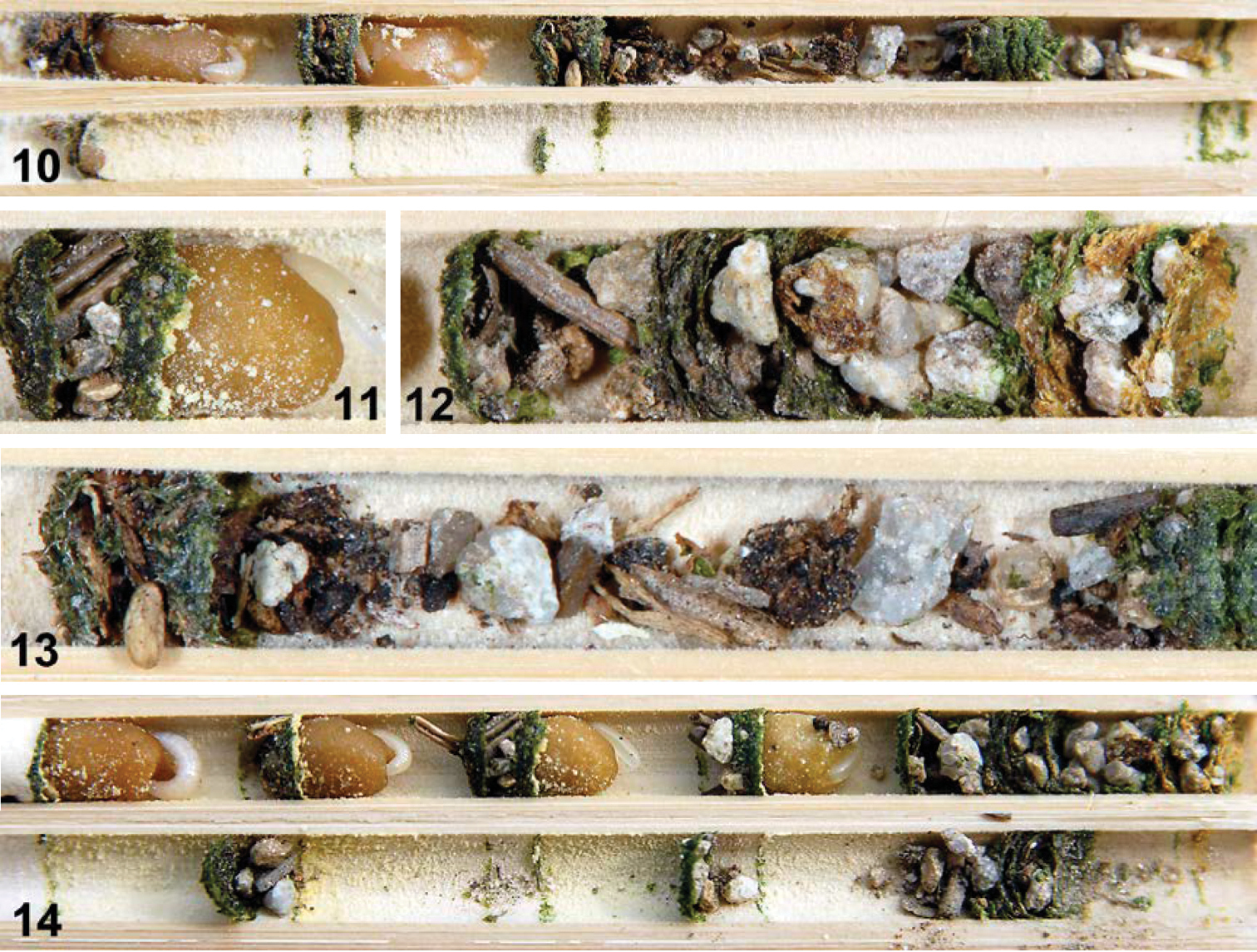
|
||
|
Nest architecture of Hoplitis tuberculata: 10 Opened nest in a hollow bamboo stick with – from left to right – i) short space filled with small particles followed by the basal wall, ii) two brood cells, which are delimited towards the nest entrance by a three-layered cell partition, iii) vestibule loosely filled with small particles, iv) nest plug consisting of one wall each at the rear and the front end enclosing a space that is filled with small particles and divided up by three additional walls (the low amount of particles in the space between the third and the fourth wall, the presence of only traces of the fourth and the outermost wall and the lack of particles between the two outermost walls is due to the loss of particles and walls during the splitting of the stick) 11 Three-layered cell partition composed of two walls enclosing an interlayer that is densely filled with particles 12 Three-layered cell partition being flush with the nest plug, which consists of several walls with densely packed small particles in between 13 Vestibule between outermost cell partition and innermost part of the nest plug loosely filled with small particles 14 Opened nest in a hollow bamboo stick with i) basal wall built directly adjacent to the pith in the rear of the stick, ii) four brood cells each delimited by a three-layered cell partition directly followed by iii) the nest plug. |